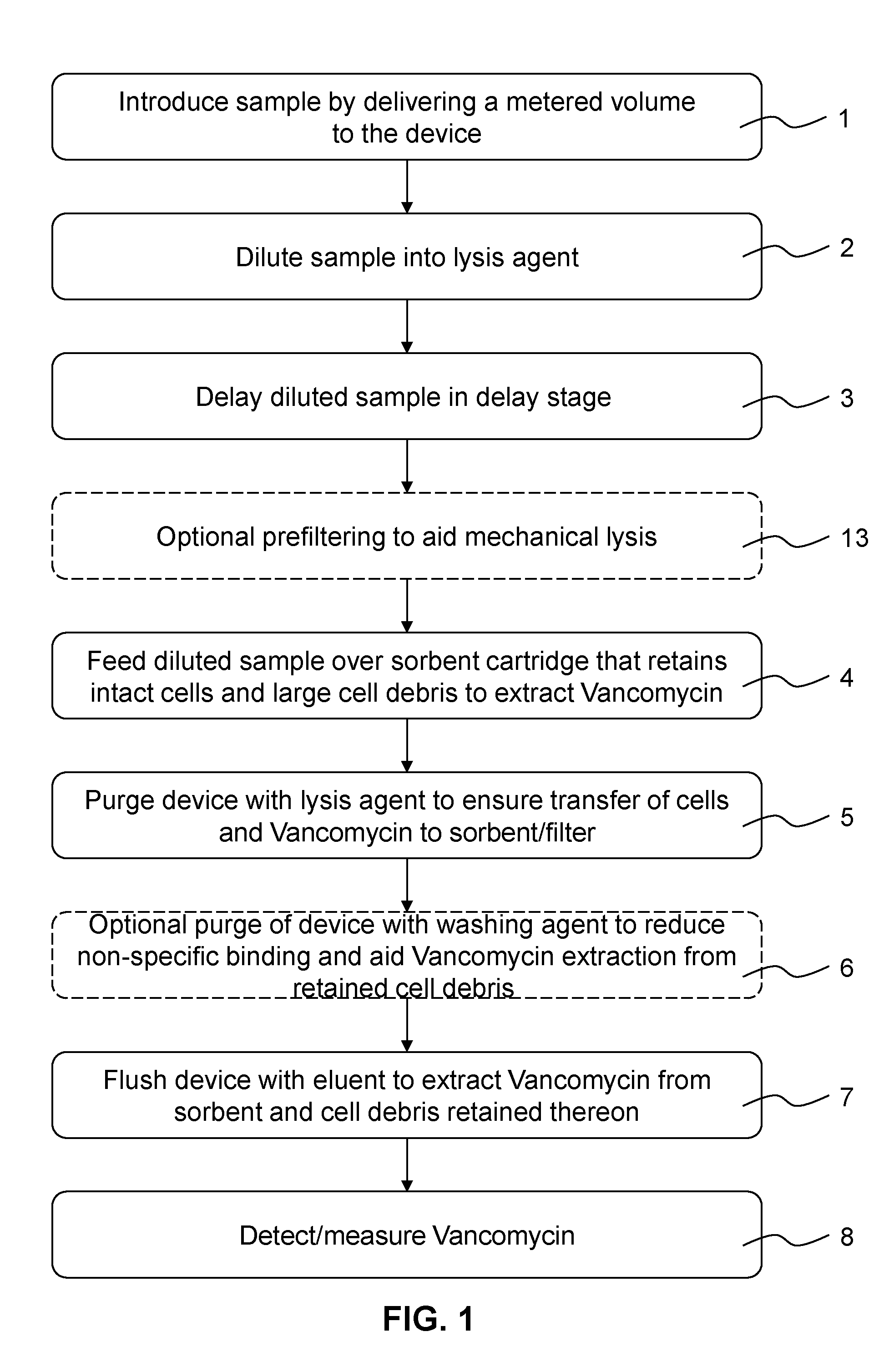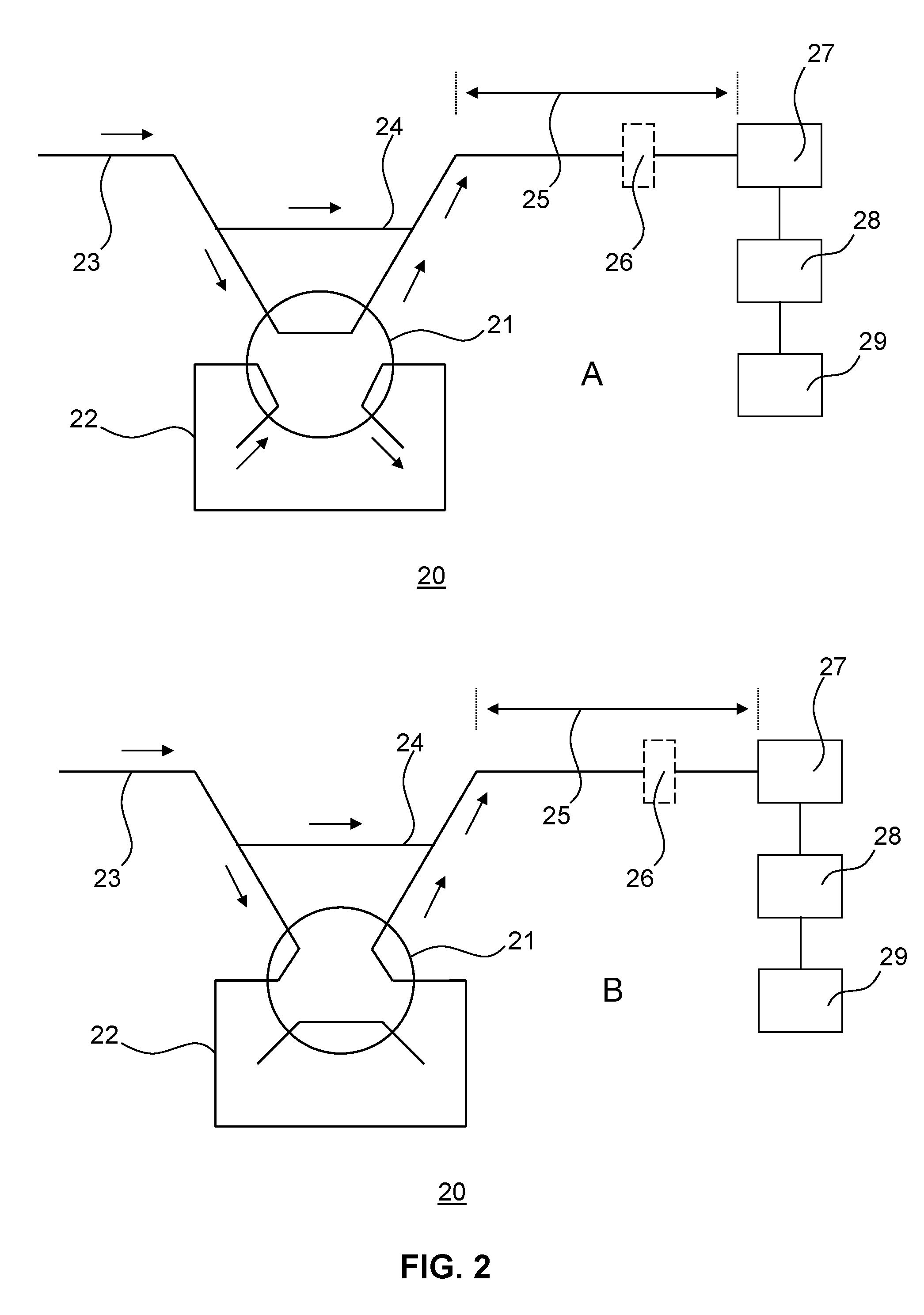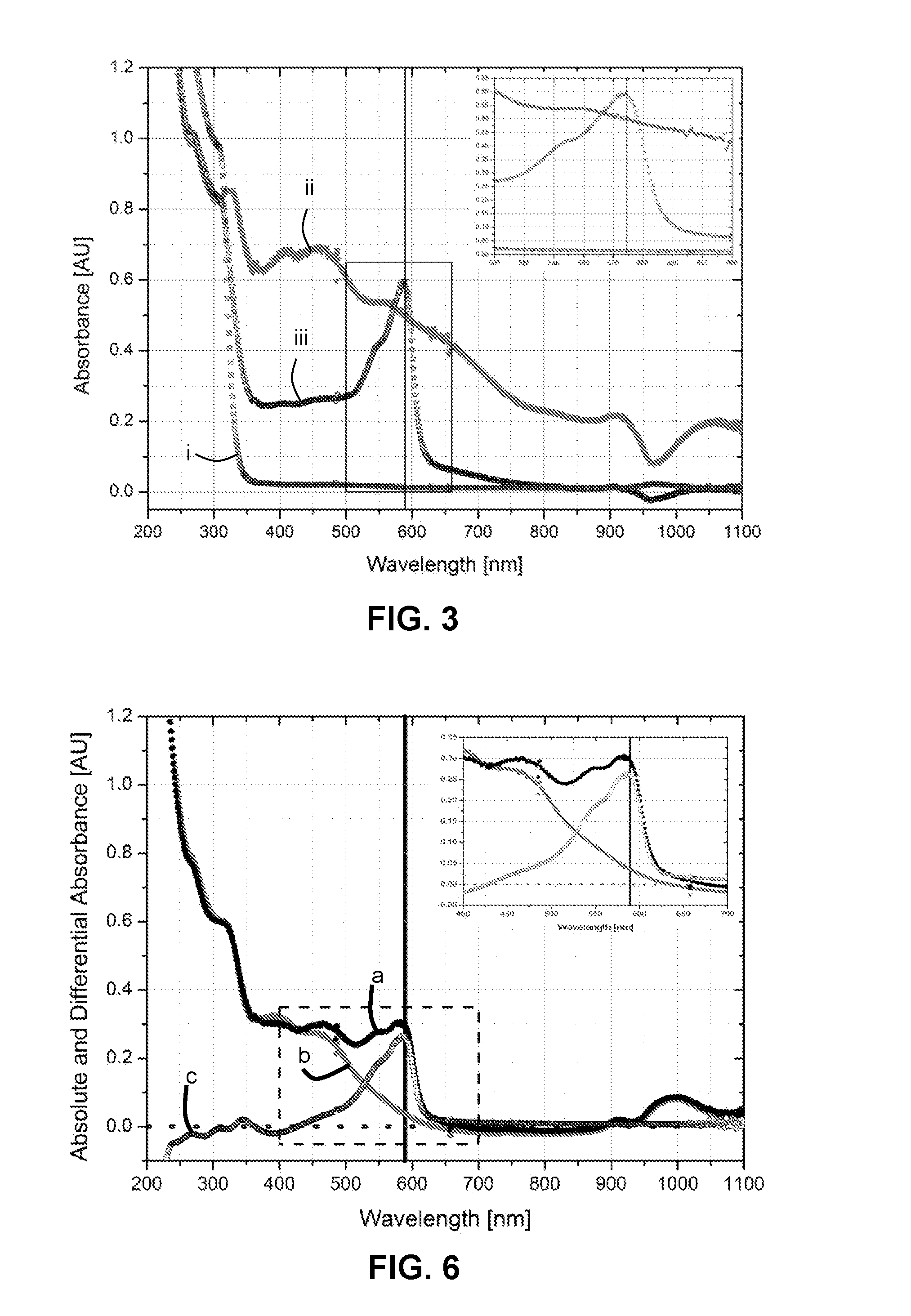Analyte extraction apparatus and method
an analyte extraction and extraction method technology, applied in chemical methods analysis, instruments, material analysis, etc., can solve the problems of £1bn per annum, major global healthcare problem, and associated increase in fatalities, and achieve reliable detection levels.
- Summary
- Abstract
- Description
- Claims
- Application Information
AI Technical Summary
Benefits of technology
Problems solved by technology
Method used
Image
Examples
synthesis example 1
[0099]In order to demonstrate that the present inventors have developed a protocol under which glycopeptide antibiotics such as Vancomycin can react with the activated Gibbs reagent, 0.8 mM of Vancomycin was dissolved in a borate buffer (0.4 M NaOH) and reacted with an equimolar amount of the activated Gibbs reagent in a mixture of methanol and borate buffer under alkaline conditions. FIG. 3 shows the UV-vis spectra of the two starting products, Vancomycin (i) and the activated Gibbs reagent (ii), and the novel purple / magenta coupling product (iii). The maximal absorbance wavelength (λmax) of the newly formed coupling product is 589 nm (highlighted by the box in FIG. 3) and its concentration can be calculated via the Beer-Lambert law. The reaction was repeated with increasing amounts of Gibbs reagent (Vancomycin:activated Gibbs reagent molar ratios 1:2, 1:3, 1:4, 1:5 and 1:65) to demonstrate that a completed coupling reaction is achieved when using excess Gibbs reagent.
[0100]The top...
example 1
[0102]A 1 ml whole serum sample spiked with Vancomycin is applied to a 30 mg / 1 ml reversed phase Strata-XTM SPE column from Phenomenex®. The column is washed firstly with 2 ml water to remove weakly bound impurities; followed by a wash with approximately 2 ml of pure organic solvents such as, but not limited to, methanol, to remove lipophilic respectively hydrophobic species, which may interfere with the coupling reaction and may lead to cross-contamination, such as, but not limited to, propofol. The Vancomycin bound to serum constituents present in the whole serum sample is then eluted from the SPE column using a known volume (0.5 ml) of a mixture of one-third water and two-thirds methanol (both by volume).
[0103]A 350 μl fraction of the elute is then transferred into a vial. Then 50 μl of 3.625 mM Gibbs in methanol is added, followed by 40 pl of 0.4 M sodium hydroxide in borate buffer or water, which initiates the coupling reaction and results in an immediate colour change. After a...
example 2
[0106]In order to verify the accuracy of the present method, whole blood serums were spiked with different Vancomycin concentrations (1.2 μM, 2.4 μM, 4.8 μM, 9.5 μM, 14.3 μM and 21.5 μM respectively) and passed over the assay as described in example 1. Two fractions of each elute were independently labelled with the Gibbs reagent to get an estimation of the accuracy of the novel Vancomycin assay. FIG. 7 shows the UV-vis differential absorption spectra of the various eluents after completing the Gibbs reaction against the reference of comparative example 1, which clearly demonstrates that with this novel assay detection of Vancomycin in the therapeutic window, 3-29 μM, is achievable.
[0107]This is further corroborated by FIG. 8, which depicts a linear fit of the eluent concentrations as obtained from the differential absorption spectra at 589 nm using a fitting function y=a+b*x, in which a was found to be −0.042±0.004; b was found to be 0.01±0.004 with a R2 value of 0.994, thus demons...
PUM
| Property | Measurement | Unit |
|---|---|---|
| specific wavelength | aaaaa | aaaaa |
| specific wavelength | aaaaa | aaaaa |
| time | aaaaa | aaaaa |
Abstract
Description
Claims
Application Information
 Login to View More
Login to View More - R&D
- Intellectual Property
- Life Sciences
- Materials
- Tech Scout
- Unparalleled Data Quality
- Higher Quality Content
- 60% Fewer Hallucinations
Browse by: Latest US Patents, China's latest patents, Technical Efficacy Thesaurus, Application Domain, Technology Topic, Popular Technical Reports.
© 2025 PatSnap. All rights reserved.Legal|Privacy policy|Modern Slavery Act Transparency Statement|Sitemap|About US| Contact US: help@patsnap.com



